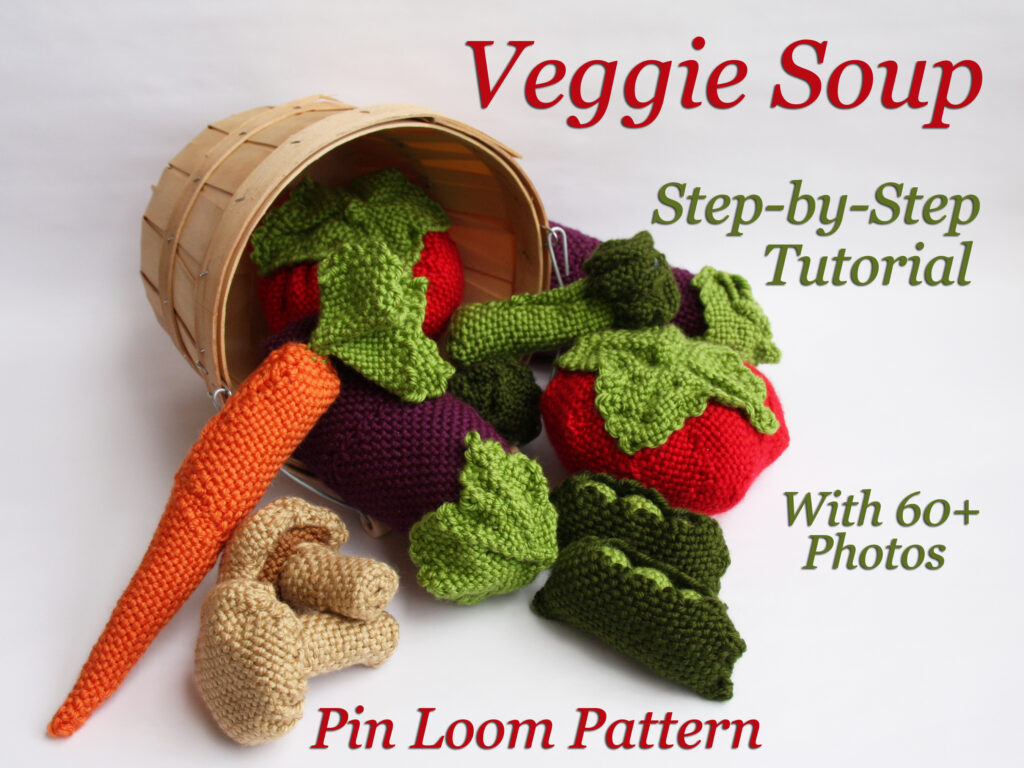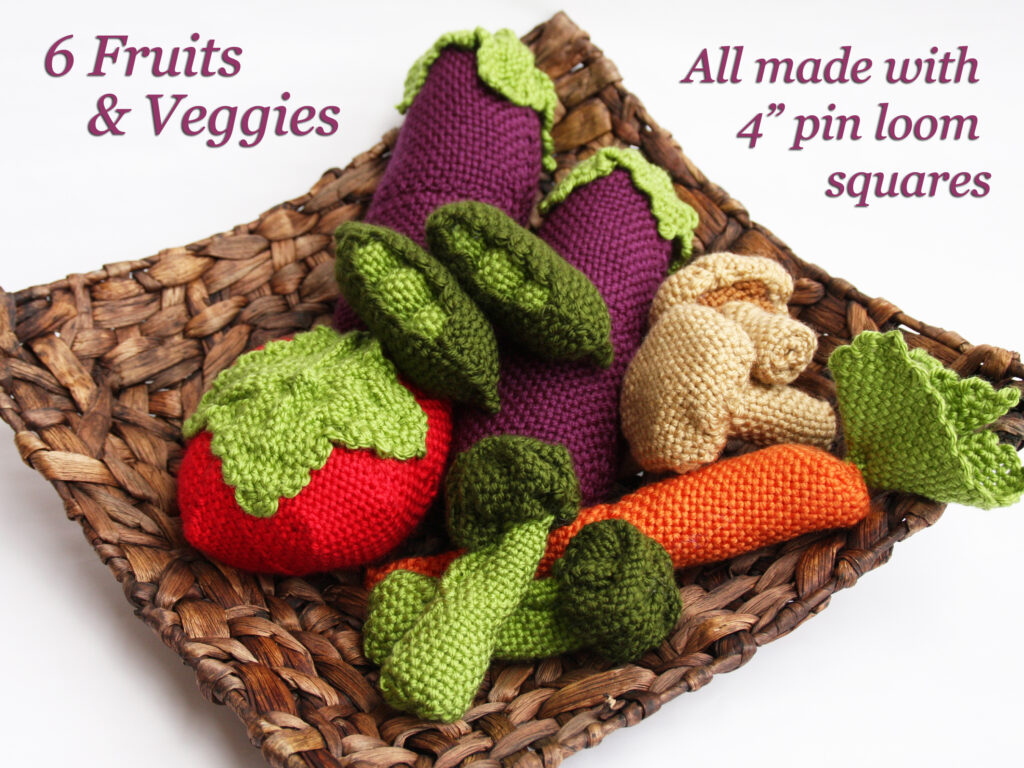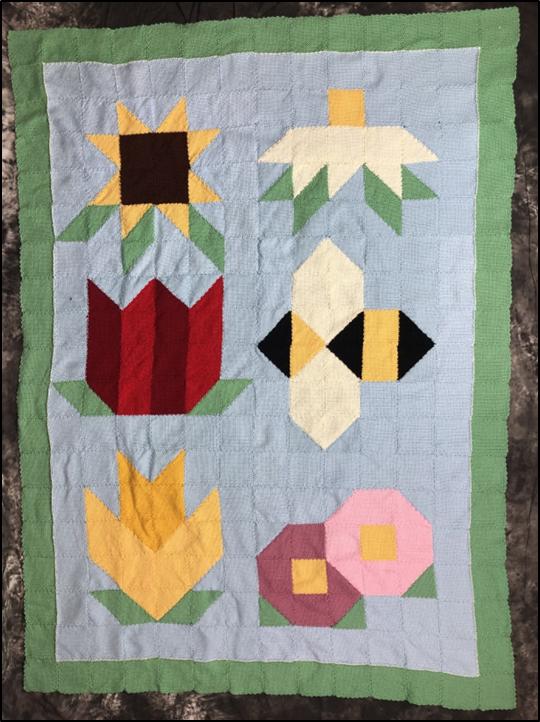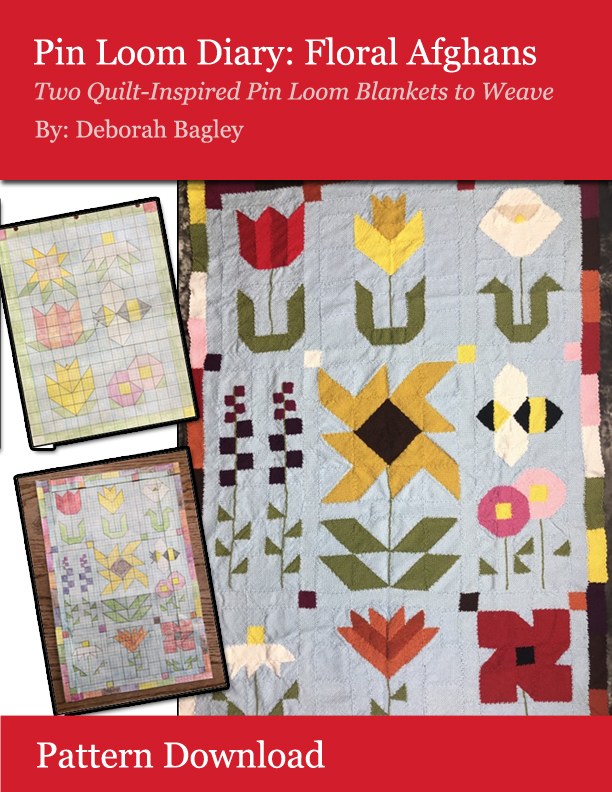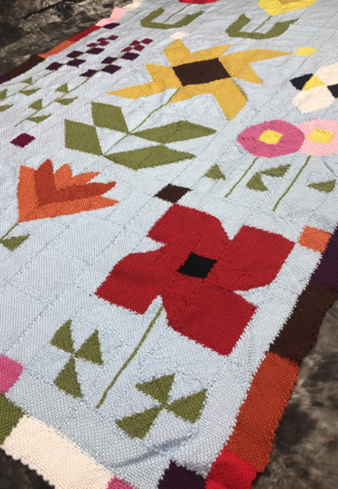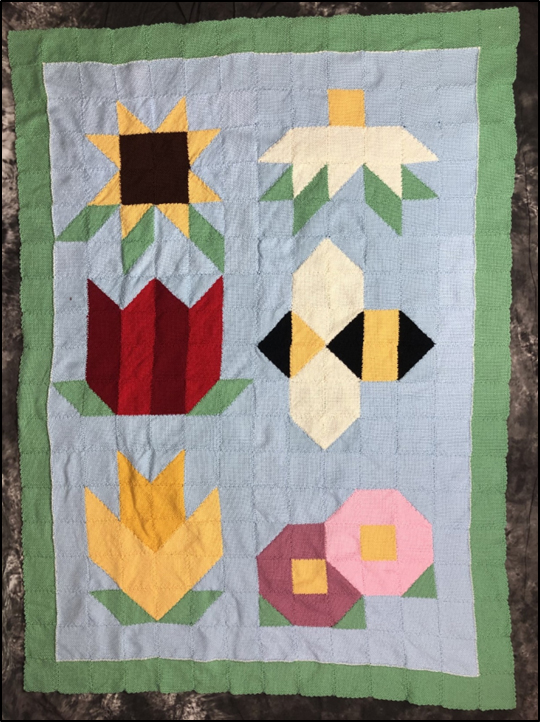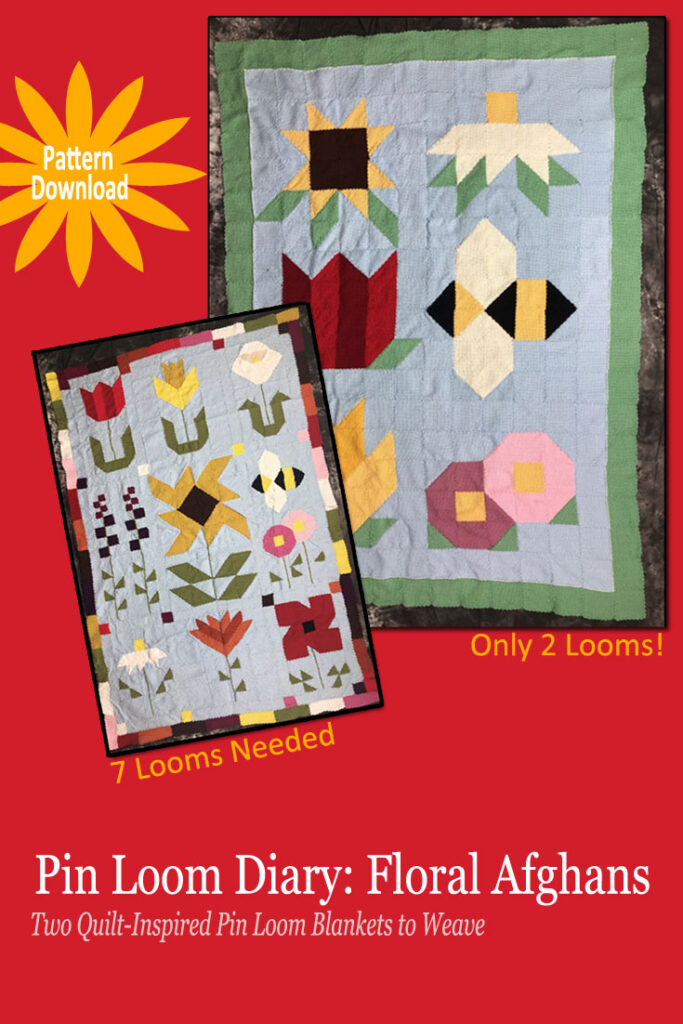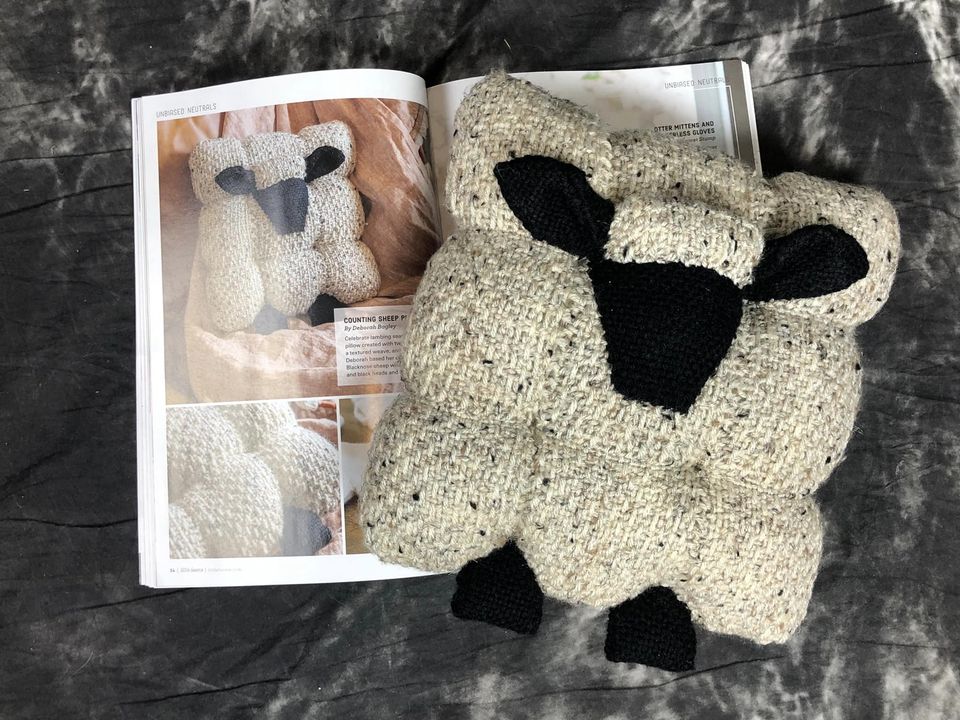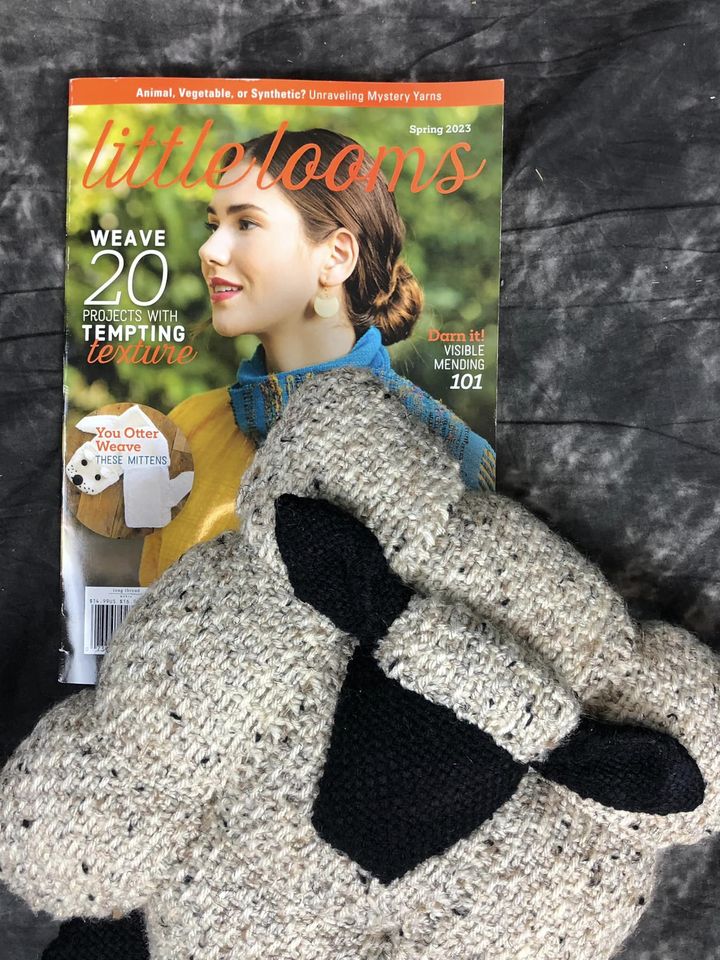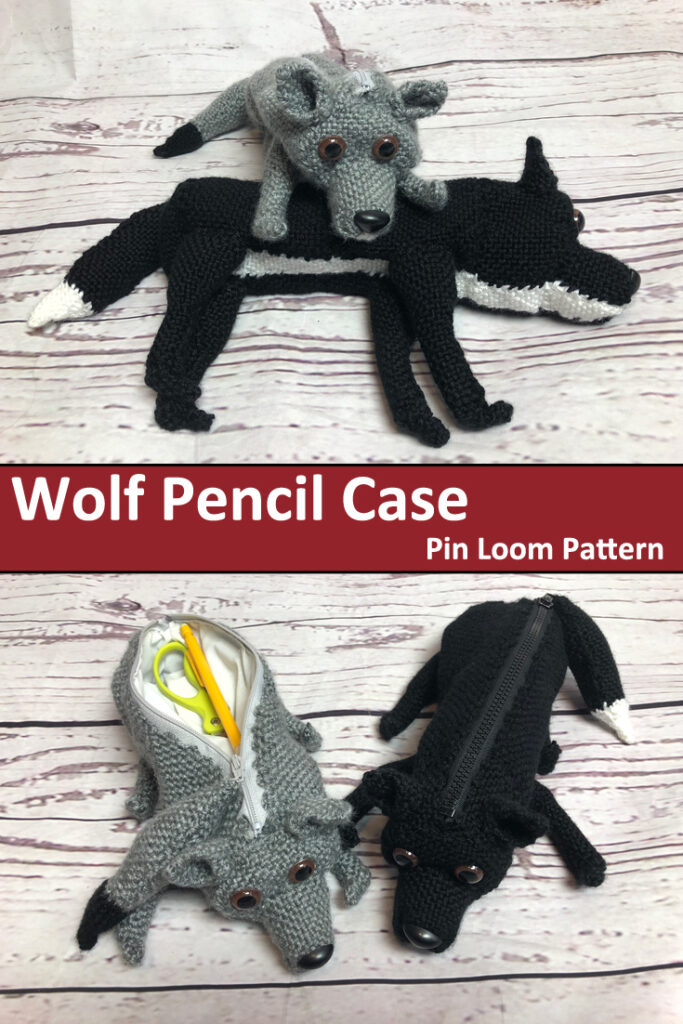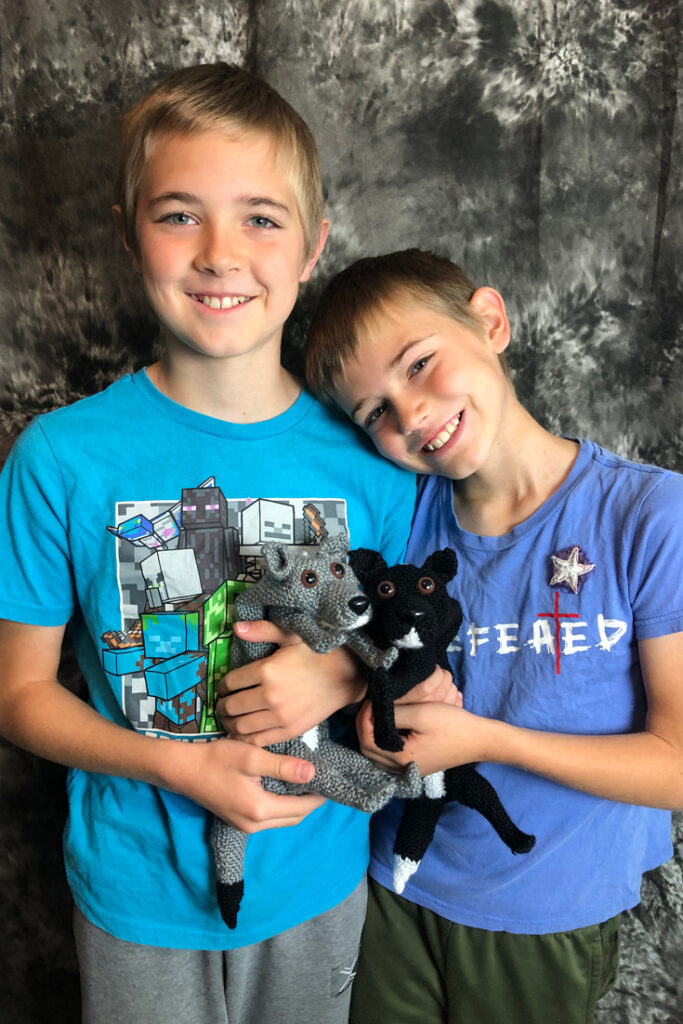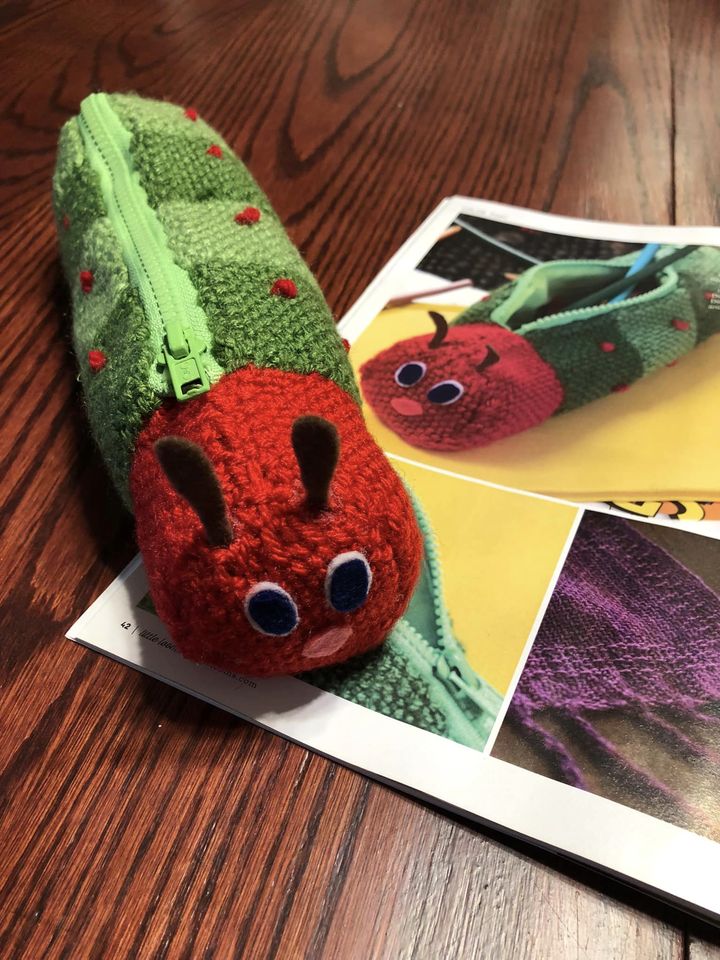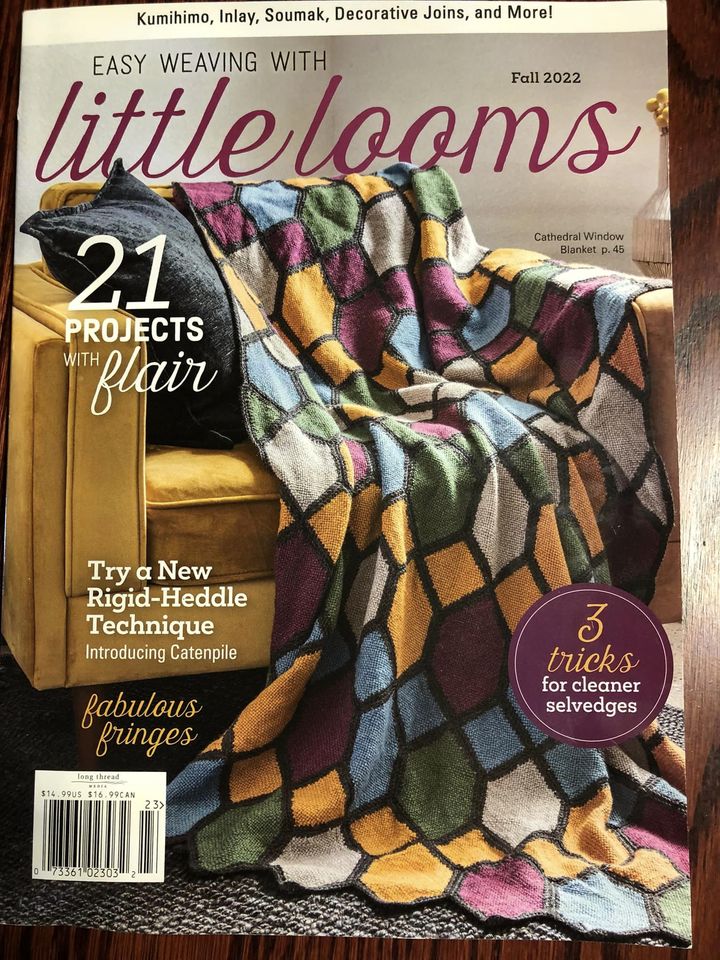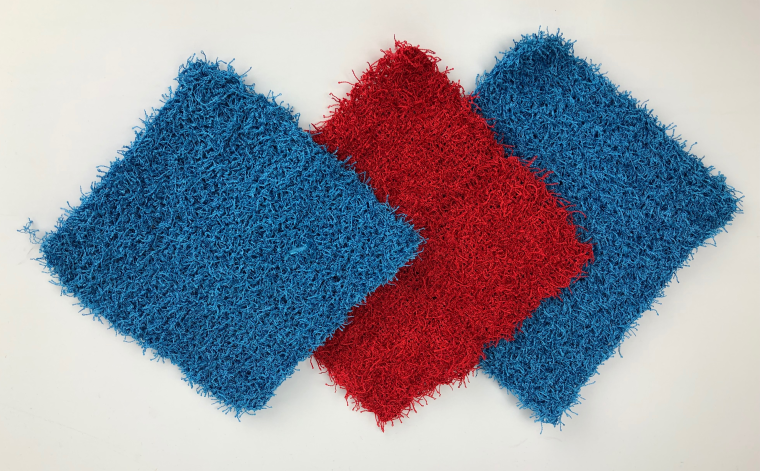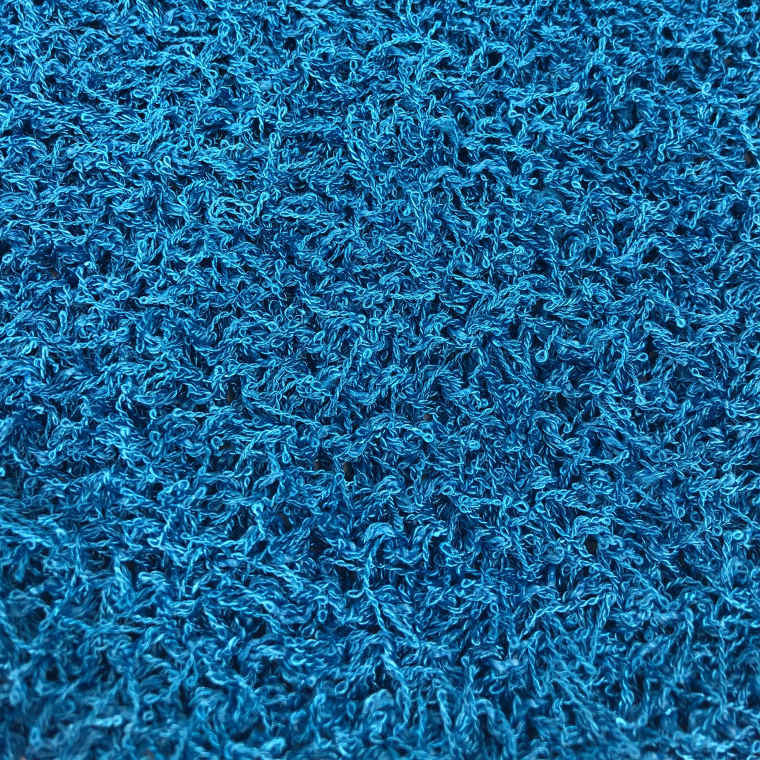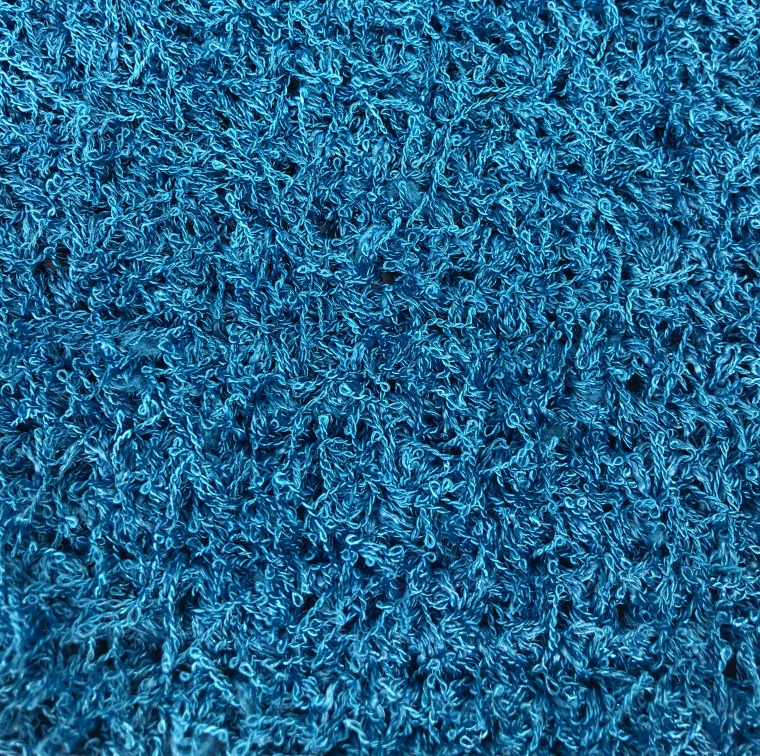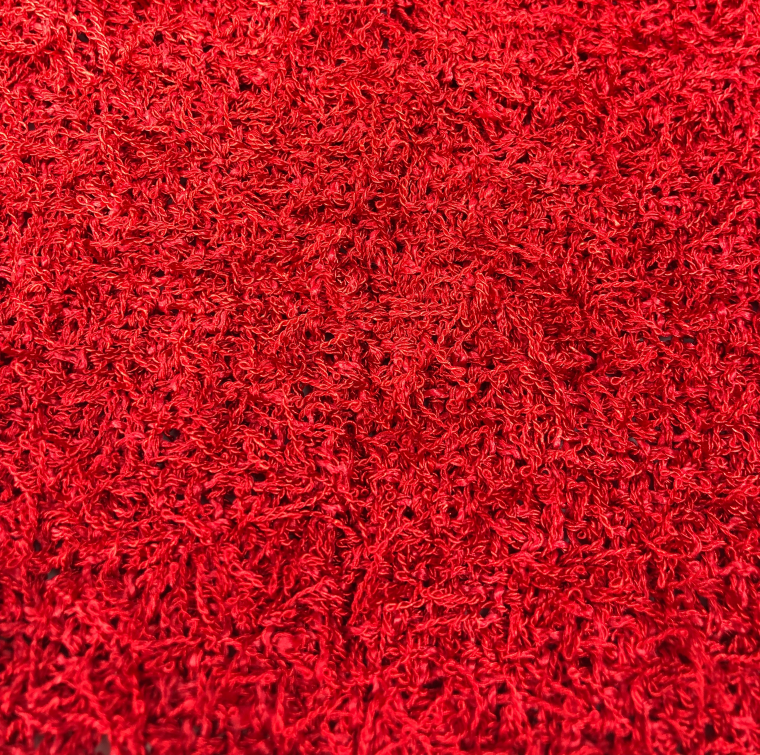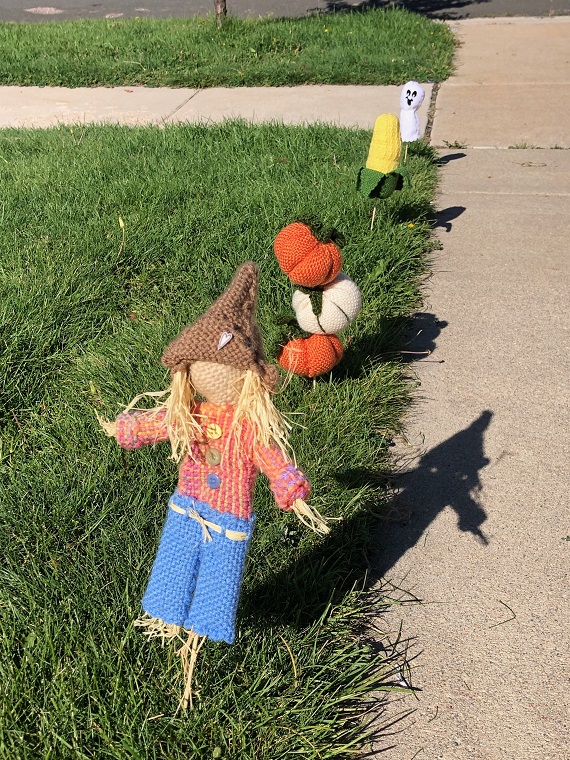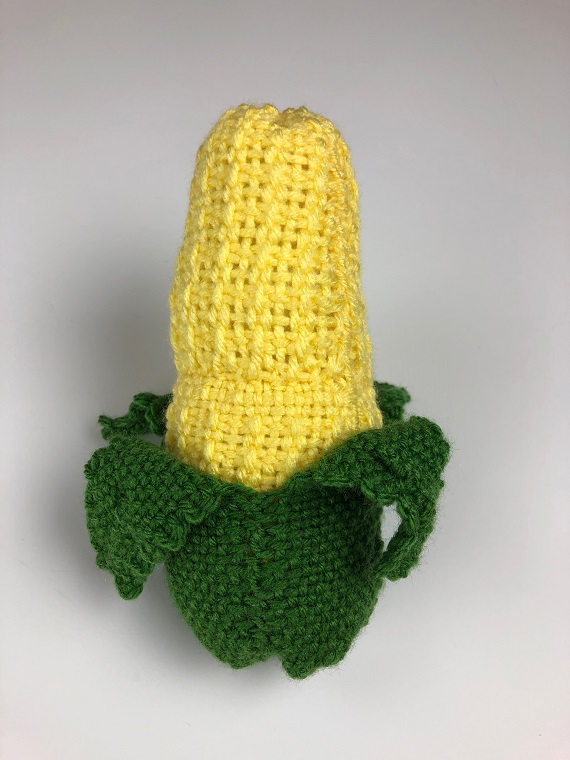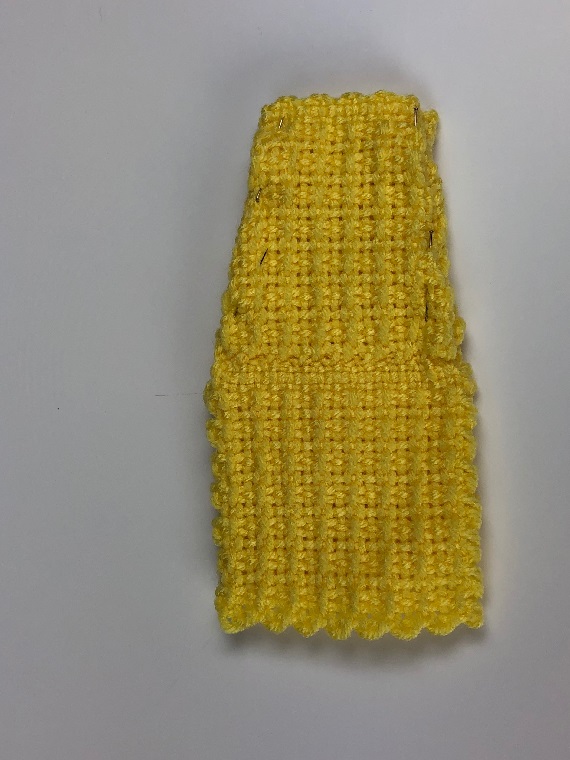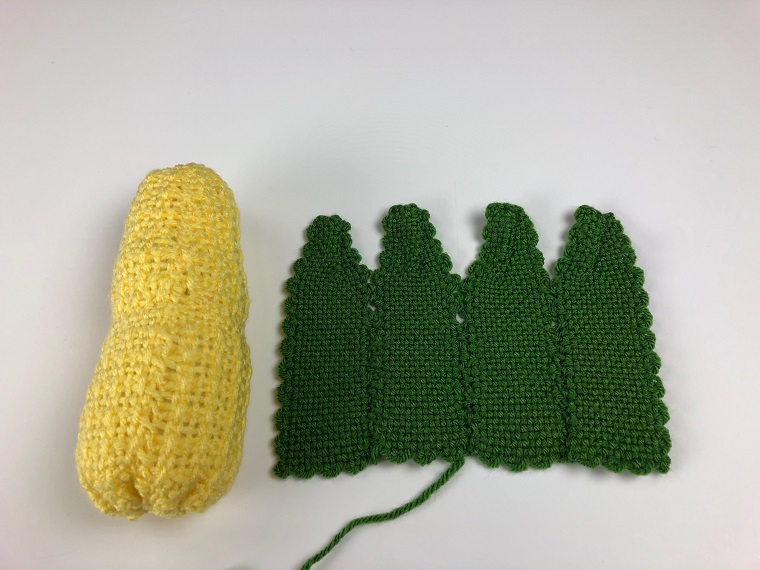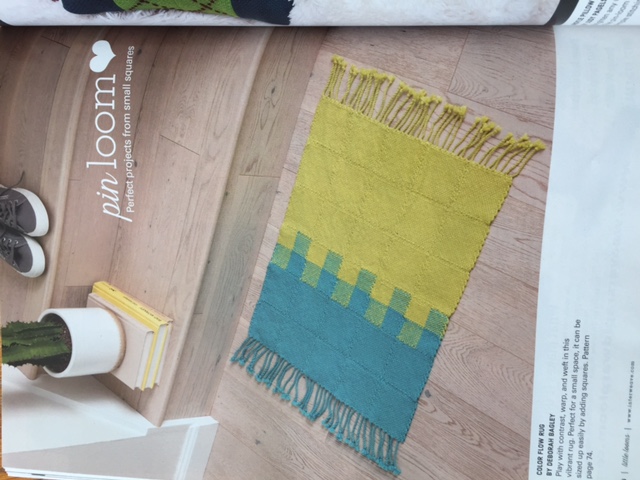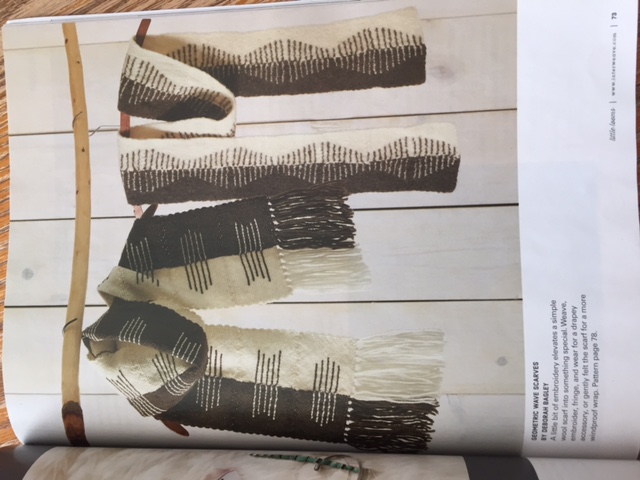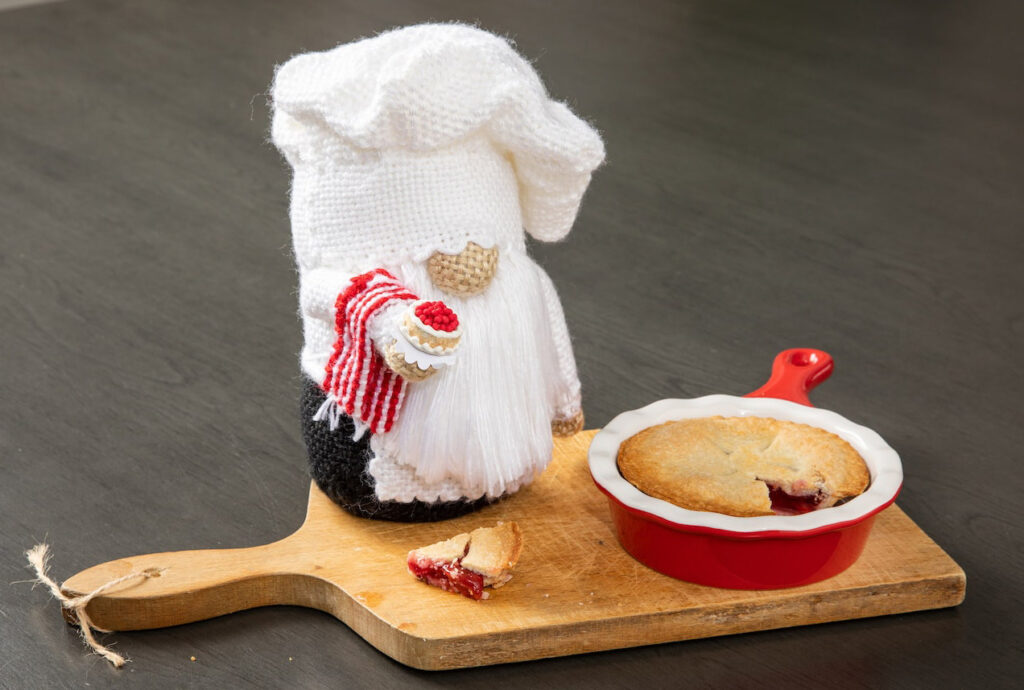
This little pin loom chef gnome has a sweet tooth. Here he is serving up some cherry desserts.
Make your own chef gnome with pin looms. He’s the perfect accessory for the kitchen and makes a great gift for those who love to cook…and eat.
We love the obvious and the subtle details that turn this gnome into an accomplished chef. The toque (hat) is probably the most iconic item. But the gnome is also wearing a white apron and holding a red and white striped serving towel. All of these items were made with pin looms. There are a couple little elements of crochet (we’ll touch on that in a moment). The cherry dessert in his hand was purchased at a craft store in the miniatures/doll department.
Chef Gnome Pattern Available on Little Looms
This particular gnome pattern was designed for Little Looms and is available with All Access membership to their site. Learn more about the online subscription to Little Looms where you can buy access to all past and present patterns from Little Looms magazine.
Materials Used to Make the Chef Gnome
The main items needed to make this chef gnome are pin looms and yarn. But there are a few other items that give the gnome his polished appearance. For instance, the yarn of the beard is combed with a metal pet comb then steam ironed to straighten the threads. Here’s a complete list of what was used to make the chef gnome:
- Pin Loom – Square: 2” and 4”
- Pin Loom – Hexagon: 3 ¾“ diameter (2” sides)
- Pin Loom – Rectangle: 2” x 4” and 2” x 6”
- Needle: 5” weaving needle, tapestry needle
- Yarns Red Heart Soft (100% acrylic; 256 yd/4 oz), #E4600 White, 200 yd; #46414 Black, 24 yd; #9274 Biscuit, 8 yd; #9925 Really Red, 5 yd.
- SUBSTITUTION if needed: Red Heart With Love (100% acrylic, 370 yd/7 oz) #1001 White, 1012 Black, #1308 Tan, #1909 Holly Berry.
- Stuffing
- Miniature Cake
- Crochet Hook Size G/6/4.00mm
- Small Bag of Bean or Something Heavy to Weigh Down the Gnome
- Straight Pins
- White Fabric Marker
- Steamer
- Pet Comb
- Hot Glue.
More about the Chef Gnome
As mentioned earlier, there is a tiny bit of crochet on the gnome. The apron strings are crocheted as are the cuffs at the wrist of each arm. If you don’t know how to crochet, then ribbon could be substituted for the apron strings. And the cuffs could be omitted.
All the shapes are woven in plain weave. So that portion is very beginner friendly. The project my look intimidating, but the pattern will explain step-by-step how to fold, roll, tuck and cinch pin loom woven shapes into a chef worthy of any kitchen.
Bon Appetit!
